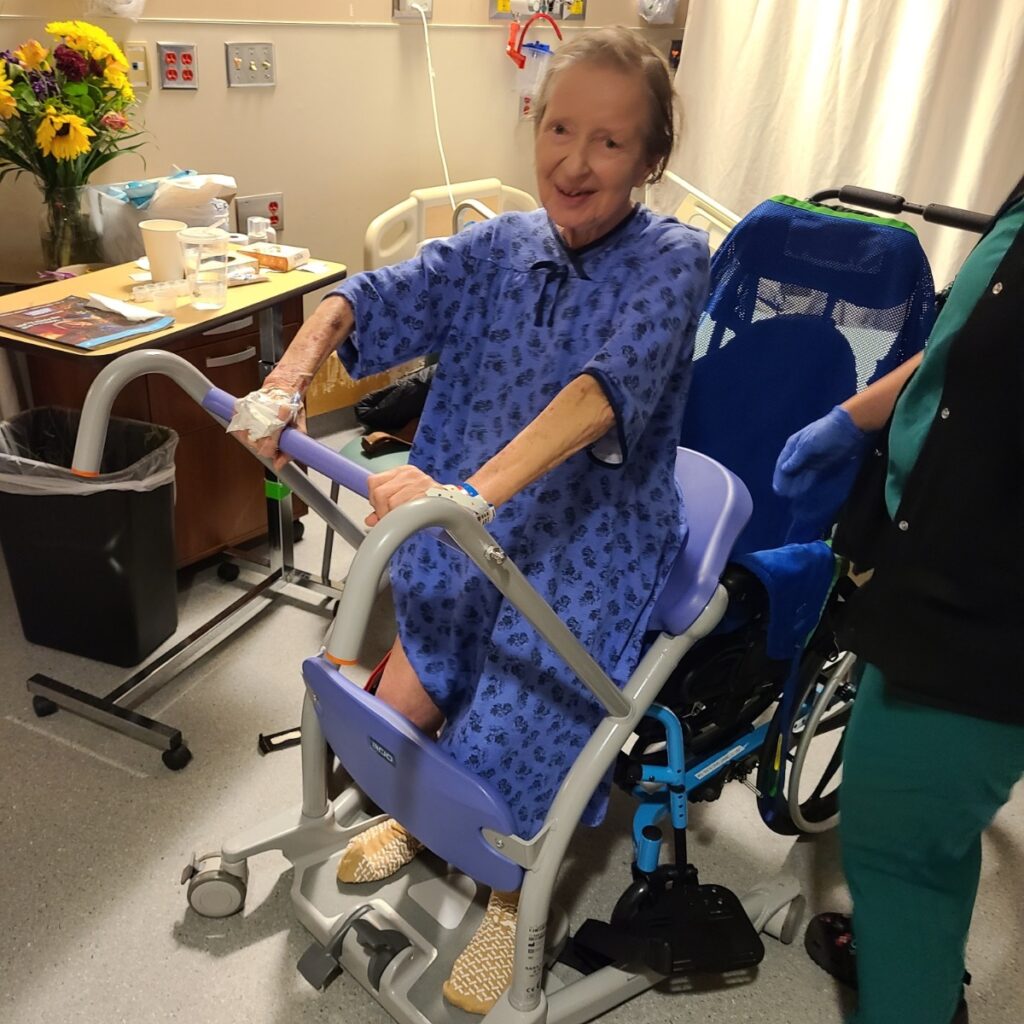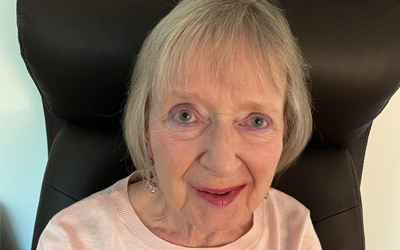On April 5, 1957, Paula Shepherd arrived in Canada from Finland at the age of 10. No one in her family spoke a word of English, but she was determined to learn the language. Despite the Herculean effort, she succeeded, and in May of 1971, she earned her first degree: a Bachelor of Arts in English Literature. Paula went on to enjoy a rewarding career in education for four decades, before retiring in 2012.
She and her husband Pete have two adult children and four beautiful grandchildren. They have always been involved in their children’s lives and helped them fulfill their passions. These were joyful, active years filled with family, movement, and purpose.
It was in the late 1980s that Paula started to notice changes in her body and brain – seemingly random symptoms would appear out of the blue, such as difficulty recognizing people’s faces, even those she had worked closely with for years. Her thinking processes also slowed down. “Sometimes, I felt as though my brain had stopped in the middle of a thought,” she says. “It was like there was a hole where just seconds ago, there had been useful information.”
Understandably concerned, Paula visited her doctor, who rolled his eyes and hinted that she was simply getting older. However, just a few years later, she started smelling something that was reminiscent of rancid, cooked European wieners at home and throughout town. One day at lunch, she spit out a piece of salami because it tasted like soap. The foul odours got so intense, including a bitter, noxious chemical smell, that she had a government-employed air quality inspector come to her home and office to perform air quality tests, concerned that the chemical smell was emanating from an industrial plant or one of Prince George’s mills.
The air quality reports came back just fine, so Paula was referred to the taste and smell clinic at St. Paul’s Hospital in Vancouver. Testing revealed she had lost 40% of her sense of taste and smell, which doctors incorrectly hypothesized was due to a virus.
The list of strange symptoms continued to grow: simple sewing tasks that took her 20 minutes now took hours, cutlery and other manual tools became frustrating to manipulate, and eating in public became uncomfortable. Paula also noticed her handwriting getting smaller and messier, and she would wake up to sensations that her bed was shaking. At other times, she felt as though a powerful engine was working below her. She waited for others in the room to comment, but no one else seemed to notice.
An aggressive tremor in her left foot appeared in 2008, but stopped when she moved and did not appear for months. By then, Paula had guessed that she had Parkinson’s disease (PD) and saw a neurologist in Prince George, who told her that her symptoms were the result of “worrying too much.” Unsatisfied, Paula asked for a referral to the Movement Disorders Clinic at the University of British Columbia, where she received a diagnosis of Parkinson’s in minutes! Finally, all the puzzle pieces began to fit, including the mysterious taste and smell issues.
Her husband was deeply upset about the diagnosis, but Paula felt numb. “I did not really understand what this meant and how much this disease would impact our lives,” she admits. Her family was incredibly loving and supportive, with her daughter even writing an entire PD-friendly yoga program for her.
For years after her diagnosis, little changed. Paula and Pete continued to travel and enjoy long bike rides together. A lifelong fitness enthusiast, Paula stayed active with yoga, exercise classes, and daily walks, but over time, the disease took its toll. She began losing her balance, fell during yoga, and grew unsteady on her bike. Fearing a serious accident, she reluctantly gave up cycling.
Six years following the PD diagnosis, Paula began to experience side effects from her various Parkinson’s medications, including dyskinesia (uncontrollable movements). Amantadine was effective at calming the dyskinesia, but gave her hallucinations and violent, terrifying nightmares.
She sought a better way of managing her Parkinson’s through DUODOPA therapy instead. Many days of assessment, paperwork, and online meetings led to a procedure date being scheduled for early January 2025.
Just three months before she was slated to receive DUODOPA, Paula suffered a stroke at the top of her spinal cord. She was about to shampoo her hair in the shower when she felt a strange, electrical pressure in her neck. Having trouble standing, Paula had Pete call for an ambulance.
She was rushed by air ambulance to Vancouver General Hospital. A delay in receiving her Parkinson’s medications triggered a terrifying physical reaction, followed by confusion, memory loss, and panic. The experience left her with a lasting fear of hospitals. Thankfully, once her care stabilized, she began to feel safe again and was supported by a compassionate team of specialists.
Doctors explored several possible causes for her stroke and presented Paula and Pete with three treatment options. They chose spinal surgery. Recovery began immediately, with occupational and physical therapists guiding her through small but significant steps: feeding herself, learning to sit up, and transferring to a wheelchair. Though initially devastated by her appearance and physical state, signs of improvement sparked hope.

Back in Prince George, with a checklist of skills needed for discharge taped beside her bed, she set to work, often for hours each morning, designing and performing her own in-bed workouts using a yoga strap. With guidance from dedicated therapists, Paula pushed herself daily in physio sessions, hand-strengthening classes, and her own rigorous routines.

Today, she is in the process of healing, though she still feels months away from a full recovery. However, the wins seem to come almost every day, such as being able to lock her seatbelt on her own for the first time in four months.
While Paula does not pretend to be endlessly positive, she faces her challenges with resilience and a strong attitude. She allows herself to fully acknowledge the losses that Parkinson’s and her stroke have brought to her, making space for feelings of grief and frustration. However, even in her hardest moments, a defiant voice reminds her, “I’m not dead yet!” That fierce determination drives her forward. Paula may not know exactly what the future holds, but she faces it with strength, clarity, and an unshakable will to live fully, every single day.

